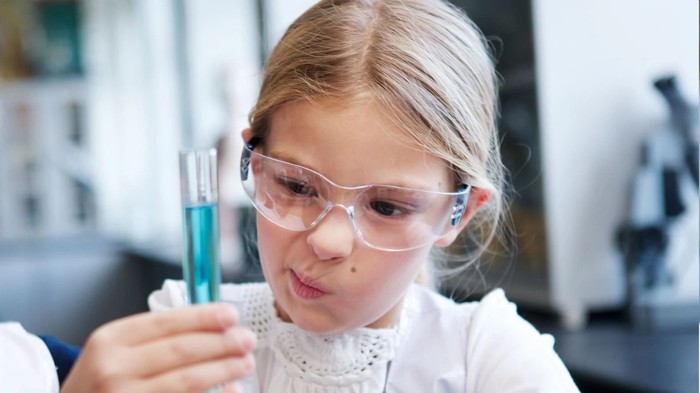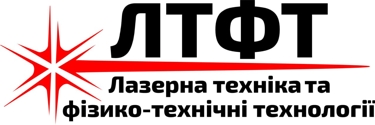International Day of Women and Girls in Science - 2024 |
 |
|
The International Day of Women and Girls in Science is an annual observance adopted by the United Nations General Assembly to promote the full and equal access and participation of women in Science, Technology, Engineering and Mathematics (STEM) fields. The United Nations General Assembly passed resolution 70/212 on 22 December 2015, which proclaimed the 11th day of February as the annual commemoration of the observance. A theme is selected annually to highlight a particular focus and area of discussion around a focus point for gender equality in science. |
💥 💥 💥
The International Day of Women and Girls in Science is implemented annually by UNESCO in collaboration with UN Women. Both organisations work with national governments, intergovernmental organisations, civil society partners, universities and corporations in order to achieve the shared goal of promoting the role of women and girls in scientific fields and celebrate those already successful in the field
The International Day of Women and Girls in Science is an annual observance adopted by the United Nations General Assembly to promote the full and equal access and participation of women in Science, Technology, Engineering and Mathematics (STEM) fields. The United Nations General Assembly passed resolution 70/212 on 22 December 2015, which proclaimed the 11th day of February as the annual commemoration of the observance. A theme is selected annually to highlight a particular focus and area of discussion around a focus point for gender equality in science.
The International Day of Women and Girls in Science is implemented annually by UNESCO in collaboration with UN Women. Both organisations work with national governments, intergovernmental organisations, civil society partners, universities and corporations in order to achieve the shared goal of promoting the role of women and girls in scientific fields and celebrate those already successful in the field.
Background
In comparison to their male peers, females are underrepresented in science and technology fields. Between the 1960s and 1980s, the number of women obtaining science and engineering degrees steadily increased in American universities, however reached an unexpected plateau from the 1980s. A 2013 UK study explored that there has existed a persistent underrepresentation of women in STEM fields, and that in the prior 25-year period there had been little change of the participation of women in science and technology. Further, social barriers including the expectation of women in the home, early marriage and discriminatory practices in the labour market have been persistent in preventing women in developing regions across the world such as Africa, South Asia and the Caribbean from not only pursuing science and technology further, but education more broadly.
In the present day these barriers to participation are still persistent, and present as social barriers. A 2013 study in the United Kingdom explored the social barriers to participation post the compulsory participation age in sciences (particularly physics) and determined that pervasive gender biases exist, with girls less likely to be encouraged to study physics by their teachers, family, and friends.
Throughout the world there are also regional differences in the particular barriers for female participation in the sciences. In the United States, it was found that lower enrolment and attraction to scientific education across the pipeline resulted in lower female participation. This differed to the Arab world, where enrolment in scientific education is particularly high, comprising a sixty to eighty percent share of total enrolments, however career and social barriers prevented further participation.

Adoption by the United Nations
On 22 December 2015, the United Nations General Assembly met to adopt resolution 70/212 titled "International Day of Women and Girls in Science". This resolution formally proclaimed February 11 as the annual observation of the International Day of Women and Girls in Science. The United Nations General Assembly invited all member states, organisations and bodies of the United Nations alongside individuals and the private sector to engage in awareness raising and educational activities to promote the full and equal access for women and girls in science. In adopting the resolution, the United Nations drew on several of its previous resolutions in order to cite the need for the observation of the International Day of Women and Girls in Science. Notably, resolution 70/1 titled "Transforming our world: the 2030 Agenda for Sustainable Development", which declared the United Nations' 2030 sustainable development goals, was cited, namely the goals of quality education and gender equality. Alongside this, resolution 68/220 was cited, where the United Nations General Assembly recognised that in order to achieve gender equality and female empowerment, it is essential to promote the full and equal access of females to participate in science, technology and innovation. The two key United Nations organisations responsible for the International Day of Women and Girls in Science are UNESCO and UN Women.
Annual commemorations and official themes
Each year on February 11, the United Nations hosts the International Day of Women and Girls in Science Assembly. The assembly brings together both representatives of member states alongside representatives of international organisations, the private sector and leading scientists to discuss measures and initiatives to promote the increased participation of females in STEM. The Assembly is co-sponsored by the Permanent Missions to the United Nations of Andorra, Antigua and Barbuda, Armenia, Australia, Bhutan, Chile, Ecuador, Finland, Greece, Latvia, Mexico, Nigeria, Republic of Korea, San Marino, and Uzbekistan. Each year the assembly focuses upon a key theme as a central topic of discussion.
| Edition | Year |
Theme |
| 1st | 2016 | Transforming the World: Parity in Science |
| 2nd | 2017 | Gender, Science and Sustainable Development: The Impact of Media - From Vision to Action |
| 3rd | 2018 | Equality and Parity in Science for Peace and Development |
| 4th | 2019 | Investment in Women and Girls in Science for Inclusive Green Growth |
| 5th | 2020 | Equality in Science, Technology and Innovation: Global Trends and Challenges |
| 6th | 2021 | Beyond the Borders: Equality in Science for Society |
| 7th | 2022 | Equity, Diversity, and Inclusion: Water Unites Us |
| 8th | 2023 | Innovate. Demonstrate. Elevate. Advance. Sustain. IDEAS: Bringing Everyone Forward for Sustainable and Equitable Development. |
| 9th |
2024 |
Innovating the Future |


